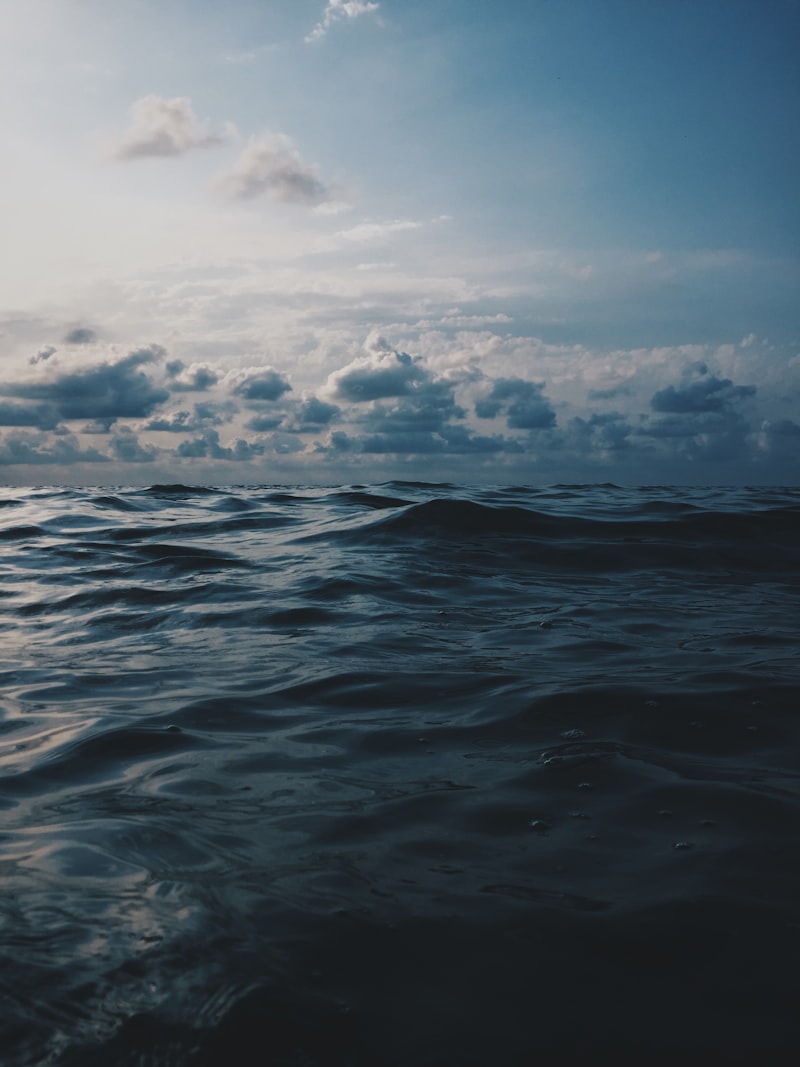One of the most intriguing aspects is their reproductive cycles, which are often synchronized with the availability of food and environmental conditions. Unlike their shallow-water counterparts, deep-sea crustaceans face challenges such as low temperatures, high pressure, and scarce food resources. To thrive in such harsh environments, they have developed specialized reproductive adaptations.
For instance, some deep-sea crustaceans exhibit bioluminescent courtship displays, using light-producing organs to attract mates in the darkness. This adaptation is crucial as visual communication is limited in the deep ocean. Others rely on chemical cues or sensitive antennae to locate potential mates amidst the vast expanse of the seabed.
Reproductive strategies also vary widely among different species. Some deep-sea crustaceans have extended larval stages, where larvae drift with ocean currents for months or even years before settling into their adult habitats. This dispersal strategy increases the chances of finding suitable habitats and reduces competition among siblings.
Furthermore, deep-sea crustaceans invest heavily in reproduction, producing large numbers of eggs to maximize the survival of offspring. This strategy compensates for the uncertainties of deep-sea life, where encounters with predators and fluctuations in food availability are common.
The reproductive biology of deep-sea crustaceans showcases a diversity of adaptations aimed at overcoming the challenges of life in the abyssal depths. By understanding these adaptations, scientists gain insights into the resilience and complexity of deep-sea ecosystems.
Secrets of Deep-Sea Crustacean Mating Unveiled: A Journey into Reproductive Biology
In the depths of the ocean, where sunlight barely reaches, a secret dance unfolds among deep-sea crustaceans. These creatures, including lobsters, crabs, and shrimp, have evolved intricate mating behaviors adapted to their extreme environment. Their courtship rituals are not just about reproduction but are finely tuned acts of survival and genetic diversity.

One of the most striking features of deep-sea crustacean mating is their use of pheromones. Imagine the ocean as a vast dance floor where males release chemical signals into the water to attract potential mates. These pheromones not only signal readiness to reproduce but also help in species recognition and mate selection. It’s like sending out a perfume that says, “I’m here, and I’m the perfect match for you.”
But finding a mate in the deep sea isn’t easy. With vast distances and limited visibility, these crustaceans rely on sensory adaptations that are finely tuned over generations. Some species have evolved bioluminescent patterns that attract mates in the darkness, creating a mesmerizing light show deep beneath the waves.
Once a suitable mate is found, the courtship rituals begin. These can range from delicate touching with antennae to elaborate dances that ensure compatibility and readiness for mating. For instance, male deep-sea crabs may perform intricate claw displays to demonstrate strength and suitability as a mate. It’s a bit like a dance-off where the stakes are high, and the prize is passing on their genetic legacy.
Interestingly, deep-sea crustaceans exhibit various mating strategies depending on their species and environment. Some are monogamous, forming long-term partnerships, while others engage in promiscuous behavior to increase genetic diversity. Each strategy has its own evolutionary advantages, ensuring the survival of their species in the harsh and competitive deep-sea ecosystem.
As we uncover more about these secretive creatures, their mating rituals continue to astound researchers and enthusiasts alike. The mysteries of deep-sea crustacean mating are a testament to the beauty and complexity of life in the ocean’s depths, where every creature plays a vital role in the circle of life.
Survival Strategies: How Deep-Sea Crustaceans Navigate Reproduction in Extreme Environments
One of the most intriguing survival strategies of deep-sea crustaceans involves their reproductive biology. Unlike their shallow-water counterparts, these creatures face immense challenges when it comes to finding mates and ensuring successful reproduction. In such pitch-black environments, visual cues are practically useless. Instead, crustaceans rely on other senses and adaptations.
Take, for instance, the remarkable ability of some deep-sea crustaceans to emit bioluminescent signals. These signals serve as a beacon in the dark, helping potential mates locate each other across vast distances. It’s akin to a lighthouse in a storm, guiding lost souls to safety. This adaptation not only aids in finding mates but also plays a crucial role in species recognition and mate selection.
Moreover, deep-sea crustaceans have evolved unique reproductive organs and behaviors suited to their environment. Some species exhibit extreme sexual dimorphism, where males and females have vastly different appearances or sizes. This dimorphism often correlates with specific roles in reproduction, such as sperm storage or egg protection, optimizing reproductive success in a challenging habitat.

Furthermore, the timing of reproduction is critical. Deep-sea crustaceans often synchronize their reproductive activities with environmental factors like food availability or seasonal changes in ocean currents. This ensures that their offspring have the best chance of survival in an otherwise hostile world.
In essence, the survival strategies of deep-sea crustaceans in navigating reproduction are a testament to nature’s resilience and innovation. Through bioluminescent signals, unique reproductive adaptations, and precise timing, these creatures defy the odds and continue to thrive in the depths of our oceans, showcasing the marvels of evolution in extreme environments.
From Darkness to Life: The Fascinating Reproductive Tactics of Deep-Sea Crustaceans
One of the most intriguing strategies is exhibited by the deep-sea anglerfish, where mating takes on a parasitic twist. The male, much smaller than the female, latches onto her body using specialized jaws. Over time, the male physically fuses with the female, sharing nutrients and eventually becoming a permanent sperm provider. This unique adaptation ensures that when the female releases eggs into the water, the male is right there to fertilize them.
Another astonishing example is found in certain species of deep-sea shrimp. These shrimp have developed bioluminescent organs that emit flashes of light. Scientists believe these flashes are used as signals during courtship, enabling males and females to find each other in the vast darkness. This not only aids in locating potential mates but also plays a crucial role in species recognition and reproductive success.
The environment of the deep sea presents numerous challenges, from near-freezing temperatures to intense pressure, yet these crustaceans have evolved to thrive in such harsh conditions. Their reproductive strategies, from symbiotic relationships to bioluminescent signals, highlight the incredible adaptability and resilience of life in the deep ocean.
As researchers delve deeper into the mysteries of the deep sea, each discovery sheds light on the interconnectedness and diversity of life forms that inhabit Earth’s most extreme habitats. Understanding these unique reproductive tactics not only enriches our knowledge of marine biology but also underscores the importance of conservation efforts to protect these fragile ecosystems.
In the perpetual darkness of the deep sea, where survival demands ingenuity and adaptation, the reproductive tactics of crustaceans stand as a testament to the astonishing diversity of life on our planet.
Unraveling Mysteries: The Intricate Courtship Rituals of Deep-Sea Crustaceans
Imagine a courtship where flashes of color and rapid movements serve as a silent language, spoken in the abyssal silence of the ocean floor. The peacock mantis shrimp, with its vibrant carapace resembling a painter’s palette, engages in a dance of rapid appendage movements. These movements, akin to an underwater ballet, communicate readiness for courtship and establish dominance in the competition for mates.
In contrast, the yeti crab, adorned with silky white hair-like structures on its claws, creates an ethereal aura in the deep-sea darkness. These crabs gather around hydrothermal vents, where they engage in a delicate dance of grooming and mutual display. Their courtship involves delicate touches and movements, emphasizing tactile communication over visual displays.
These rituals, adapted to the extreme environment of the deep sea, highlight the resilience and adaptability of these crustaceans. Analogous to the intricate courtships observed in terrestrial species, such as birds of paradise or bowerbirds, these deep-sea rituals demonstrate evolution’s creativity in diverse habitats.
Metaphorically speaking, these creatures paint the ocean floor with their courtship performances, each movement and gesture adding a stroke to the canvas of survival and reproduction. The mysteries of deep-sea courtship rituals continue to captivate scientists and enthusiasts alike, offering a glimpse into a world where darkness yields surprising beauty and complexity.
Adaptation at the Abyss: Evolutionary Insights into Deep-Sea Crustacean Reproduction
Deep-sea crustaceans, residing in the abyssal depths of our oceans, showcase remarkable adaptations that intrigue scientists worldwide. These creatures, under extreme pressure and minimal light, have evolved unique strategies for reproduction, offering profound insights into evolutionary biology.
Unlike their shallow-water relatives, deep-sea crustaceans face significant challenges in finding mates and ensuring reproductive success. The adaptations they have developed are nothing short of awe-inspiring. Take the anglerfish, for example, where males fuse onto females, becoming parasitic but essential for fertilization in the dark, expansive abyss.
In this lightless world, bioluminescence plays a pivotal role. Many deep-sea crustaceans utilize glowing displays to attract mates or confuse predators. This adaptation not only aids in reproduction but also underscores their ability to thrive in environments where traditional senses like sight are of little use.
Furthermore, the reproductive cycles of these creatures often span extended periods, influenced by food availability and environmental conditions that are vastly different from those nearer to the ocean’s surface. This adaptation ensures that reproduction occurs when conditions are optimal, increasing the likelihood of offspring survival in such harsh habitats.
The study of deep-sea crustacean reproduction provides crucial insights into evolutionary processes. It highlights how life adapts to extreme environments, pushing the boundaries of what we understand about survival strategies and reproductive success in the darkest corners of our planet’s oceans.
This article aims to capture the fascination of deep-sea exploration and the marvels of evolutionary adaptation, engaging readers with its informative yet conversational tone.
Love in the Deep: How Deep-Sea Crustaceans Find and Choose Their Mates
Imagine a world where sunlight doesn’t penetrate, and the ocean floor is a realm of perpetual darkness. Deep-sea crustaceans navigate this environment with astonishing precision. They rely on senses finely tuned to detect the subtlest of signals—a chemical trail left by a potential mate, or the faint vibrations of a nearby companion.
Communication is key in this hidden world. Unlike their shallow-water counterparts, deep-sea crustaceans often communicate through bioluminescence, producing light signals that are both mesmerizing and functional. These flashes of light serve as beacons in the dark, allowing mates to locate each other across great distances.
Choosing the right mate is crucial for deep-sea crustaceans. It’s not just about finding a partner—it’s about finding the right partner. Competition can be fierce in these extreme habitats where resources are scarce and survival is challenging. Mates must prove their worth through displays of strength, agility, or even the ability to provide nourishment in environments where food is sparse.
Interestingly, deep-sea crustaceans often engage in elaborate courtship rituals that are both intricate and beautiful. These rituals serve multiple purposes: they allow potential mates to assess each other’s fitness and compatibility while also reinforcing social bonds within their species.
Frequently Asked Questions
How do deep-sea crustaceans ensure successful mating and fertilization in darkness?
Discover how deep-sea crustaceans ensure successful mating and fertilization in complete darkness through specialized sensory adaptations and bioluminescent signaling mechanisms.
How do deep-sea crustaceans reproduce in extreme environments?
Learn about the reproductive strategies of deep-sea crustaceans in extreme environments, including adaptations for low light and high pressure conditions, and how they ensure species survival in challenging habitats.
What are the challenges deep-sea crustaceans face in maintaining reproductive success at extreme depths?
Discover the unique challenges deep-sea crustaceans encounter in maintaining reproductive success at extreme depths. Explore the adaptations and strategies these creatures employ to overcome extreme pressure, darkness, and cold temperatures to ensure their species’ survival.
What role does bioluminescence play in the reproductive behavior of deep-sea crustaceans?
Learn about the crucial role of bioluminescence in the reproductive behavior of deep-sea crustaceans, illuminating how light signals are pivotal in attracting mates and facilitating successful breeding in the dark depths of the ocean.
What are the unique reproductive adaptations of deep-sea crustaceans?
Discover the distinctive reproductive adaptations of deep-sea crustaceans, highlighting their specialized strategies for survival in extreme oceanic environments.



